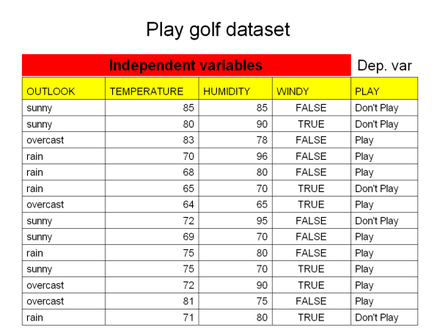|
Decision table Decision tables are a concise visual representation for specifying which actions to perform depending on given conditions. Decision table is the term used for a Control table or State-transition table in the field of Business process modeling; they are usually formatted as the transpose of the way they are formatted in Software engineering. OverviewEach decision corresponds to a variable, relation or predicate whose possible values are listed among the condition alternatives. Each action is a procedure or operation to perform, and the entries specify whether (or in what order) the action is to be performed for the set of condition alternatives the entry corresponds to. To make them more concise, many decision tables include in their condition alternatives a don't care symbol. This can be a hyphen[1][2][3] or blank,[4] although using a blank is discouraged as it may merely indicate that the decision table has not been finished.[citation needed] One of the uses of decision tables is to reveal conditions under which certain input factors are irrelevant on the actions to be taken, allowing these input tests to be skipped and thereby streamlining decision-making procedures.[5]
Aside from the basic four quadrant structure, decision tables vary widely in the way the condition alternatives and action entries are represented.[6][7] Some decision tables use simple true/false values to represent the alternatives to a condition (similar to if-then-else), other tables may use numbered alternatives (similar to switch-case), and some tables even use fuzzy logic or probabilistic representations for condition alternatives.[8] In a similar way, action entries can simply represent whether an action is to be performed (check the actions to perform), or in more advanced decision tables, the sequencing of actions to perform (number the actions to perform). A decision table is considered balanced[4] or complete[3] if it includes every possible combination of input variables. In other words, balanced decision tables prescribe an action in every situation where the input variables are provided.[4] ExampleThe limited-entry decision table is the simplest to describe. The condition alternatives are simple Boolean values, and the action entries are check-marks, representing which of the actions in a given column are to be performed. The following balanced decision table is an example in which a technical support company writes a decision table to enable technical support employees to efficiently diagnose printer problems based upon symptoms described to them over the phone from their clients.
This is just a simple example, and it does not necessarily correspond to the reality of printer troubleshooting. Even so, it demonstrates how decision tables can scale to several conditions with many possibilities. Software engineering benefitsDecision tables, especially when coupled with the use of a domain-specific language, allow developers and policy experts to work from the same information, the decision tables themselves. Tools to render nested if statements from traditional programming languages into decision tables can also be used as a debugging tool.[9][10] Decision tables have proven to be easier to understand and review than code, and have been used extensively and successfully to produce specifications for complex systems.[11] HistoryIn the 1960s and 1970s a range of "decision table based" languages such as Filetab were popular for business programming. Program embedded decision tablesDecision tables can be, and often are, embedded within computer programs and used to "drive" the logic of the program. A simple example might be a lookup table containing a range of possible input values and a function pointer to the section of code to process that input.
Control tablesMultiple conditions can be coded for in similar manner to encapsulate the entire program logic in the form of an "executable" decision table or control table. There may be several such tables in practice, operating at different levels and often linked to each other (either by pointers or an index value). Implementations
See also
References
Further reading
External links
|
||||||||||||||||||||||||||||||||||||||||||||||||||||||||||||||||||||||||||||||||||||||||||||||||||||||||||||||||||||||||||||||||||||||||||||||||||||||||||||